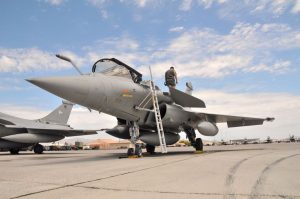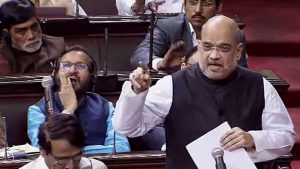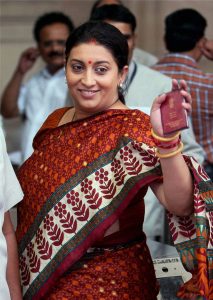Red Flags for Rafale
 The secret clause that the NDA government is waving to avoid disclosing pricing and other details of the Rafale deal signed between India and France has raised any number of red flags. The secret clause is to do with details that will be concealed in case there is a dispute at a later stage in the agreement between India and France and the matter goes for arbitration. The biggest red flag is over the cost per aircraft.
The secret clause that the NDA government is waving to avoid disclosing pricing and other details of the Rafale deal signed between India and France has raised any number of red flags. The secret clause is to do with details that will be concealed in case there is a dispute at a later stage in the agreement between India and France and the matter goes for arbitration. The biggest red flag is over the cost per aircraft.
Defence Minister Nirmala Sitharaman refused to give details but in an earlier reply in the Lok Sabha, the minister of state for defence had stated that the cost of each aircraft was “approximately Rs 670 crore”. However, Indian air force officers have confirmed that the unit cost is higher—Rs 1,640 crore. This was the deal worked out between Prime Minister Modi and his French counterpart which commits the manufacturer, Dassualt, to upgrade the armament’s package, ensure 75 per cent fleet availability which will include spare parts and engine replacement, and logistics support for five years. The undisclosed aspect of the deal is that the upgrade will also apply to India’s existing fleet of Mirage 2000 aircraft, also made by Dassault, which carries a nuclear weapons payload. The deal has been controversial ever since the NDA government scrapped the earlier one being negotiated by the UPA which called for 126 aircraft and a technology transfer clause. Now, India gets 36 fighters, enough for just three squadrons, by 2020 when the IAF’s current inventory is 35 squadrons out of a requirement of 45.
France was desperate to sell the Rafale which, apart from the French air force, had only attracted interest from Egypt and Qatar. The deal was a financial windfall for France (and Anil Ambani) and would only have been agreed to by India if there is a secret agreement. Naval sources suggest that the Rafale deal has also elements to do with the Scorpene Submarines being built in India and a new weapons/radar suite from the French company, Thales. Clearly, the French have got the better of the deal.
Shah en Shah
 There’s a new buzz in the Rajya Sabha thanks to the arrival of BJP president Amit Shah who made his parliamentary debut last week. It is patently clear that he is the second most important person in the NDA and in his hands lie the fortunes of anyone with political ambitions, not to mention existing MPs. The signs are obvious: the moment he walks in, or swaggers in, to the upper house, there is a noticeable buzz in the air and he is immediately surrounded by MPs belonging to the NDA. He is ignored by the Opposition and he ignores them in turn, especially Sonia and Rahul.
There’s a new buzz in the Rajya Sabha thanks to the arrival of BJP president Amit Shah who made his parliamentary debut last week. It is patently clear that he is the second most important person in the NDA and in his hands lie the fortunes of anyone with political ambitions, not to mention existing MPs. The signs are obvious: the moment he walks in, or swaggers in, to the upper house, there is a noticeable buzz in the air and he is immediately surrounded by MPs belonging to the NDA. He is ignored by the Opposition and he ignores them in turn, especially Sonia and Rahul.
He occupies the seat allotted to Venkaiah Naidu before his elevation, which is a front row seat in the block next to the two-seater occupied by Narendra Modi and Jaitley. When he made his maiden speech, the loudest claps and thumping of desks came from union cabinet ministers, a testament to the unbridled power he wields.
Smriti and the Sari
 Smriti Irani is generally all smiles and exudes bonhomie at public functions; it’s effective PR and it’s a rare function when she is spotted without her famous smile and some jocular remarks. Rarely does the mask slip, as it did last week during an interaction with the public during a function hosted by her ministry at Siri Fort auditorium. One member of the public stood up to ask a pertinent, or impertinent question—did the minister for textiles wear the same saris she propagated under her handloom campaign? Ministry officials present were quick to tell the questioner to sit down and zip up and Irani herself looked clearly flustered and shot back that it was not necessary for her to wear handloom saris on every occasion.
Smriti Irani is generally all smiles and exudes bonhomie at public functions; it’s effective PR and it’s a rare function when she is spotted without her famous smile and some jocular remarks. Rarely does the mask slip, as it did last week during an interaction with the public during a function hosted by her ministry at Siri Fort auditorium. One member of the public stood up to ask a pertinent, or impertinent question—did the minister for textiles wear the same saris she propagated under her handloom campaign? Ministry officials present were quick to tell the questioner to sit down and zip up and Irani herself looked clearly flustered and shot back that it was not necessary for her to wear handloom saris on every occasion.


